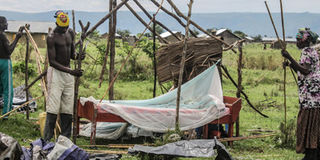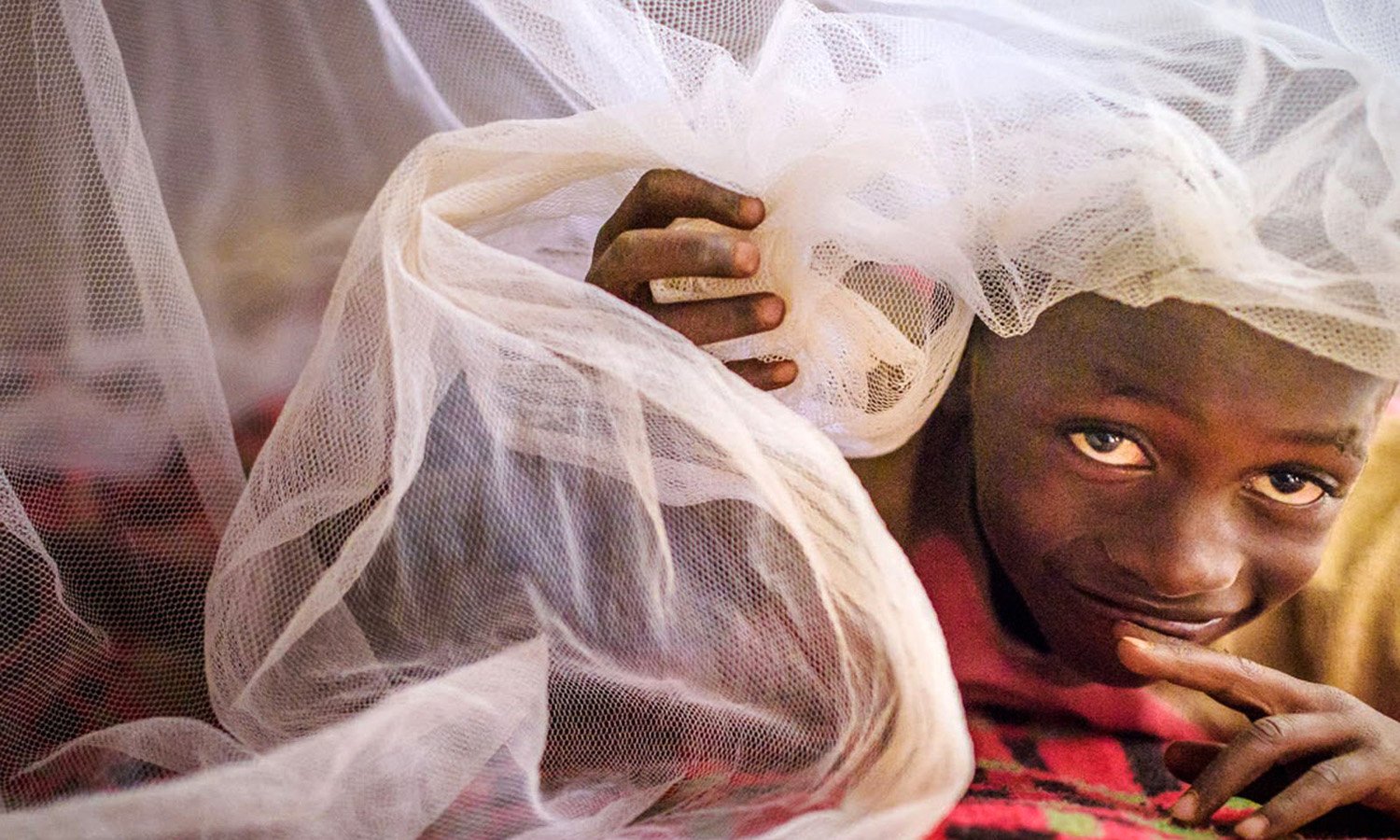Ntoroko seeks Shs4b to settle flood victims

Flood victims erect temporary shelter in Kachwankumu Village in Ntoroko District on May 1. PHOTO/ ALEX ASHABA
Ntoroko District authorities are seeking more than Shs4 billion from the government to settle flood victims displaced by the rising water levels of Lake Albert.
Authorities say since January, the rising water levels have continued to displace people, destroy their properties and submerged their houses.
The acting Ntoroko District chairperson, Mr Ben Muthahinga, told Daily Monitor in an interview that the most affected areas are sub-counties and town councils that border Lake Albert.
“As a district, we are still struggling to acquire some funds to see that we help our people who are displaced by the floods,” Mr Muthahinga said.
The district floods assessment report 2020 that was released recently indicated that the heavily affected areas include Kanara Sub-county and Kanara Town Council, where all the affected households have sought refuge in camps.
The sub-county has six parishes and 26 villages that were all affected.
In Kanara Town Council, four villages were affected. The floods also hit the villages of Rwenyangi, Ntoroko A and B, and Ntoroko West.
Due to the Covid-19 pandemic, the temporary camps established in the area have inadequate amenities such as safe water sources, shelter, and pit-latrines.
Ms Justine Kobugabe, a victim, who stays at Umoja Primary School, said they are living in congested places and are at high risk of contracting diseases, especially Covid-19 because the standard operating procedures are not being observed.
Temporary camps have been established at Kajweka–Itambiro, Katanga Secondary School/Health Centre, Rwangara Primary School, Katanga Catholic Church, and victims are worried that if the schools re-open, they will have nowhere to reside.
Other camps include Kanara Sub-county, Mateso/Anglican Church, Late Muhammed, and Kachwankumu Primary School.
According to the report, a total of 6,475 people are living in camps in Kanara Sub-county with more than 1,300 homes abandoned.
In Kanara Town Council, the report shows that more than 900 people are living in camps.
Mr Muthahinga said the funds will procure jerrycans, buckets, blankets, turplines, mosquito nets, maize flour, hand washing facilities and beans.
The district suggests construction of 13 - 5 stance VIP pit-latrines, installation of 30 mobile latrines, rehabilitation of existing four boreholes and five wells, installation of 14 crest tanks, rehabilitation of classroom blocks that house the victims, among others.
The Kanara Town Council chairperson, Mr David Kor, said most of the displaced people have no food.
“We have sought government intervention in vain and the people here depend on fishing for a living. Their livelihood is being threatened since the water volume has increased,” Mr Kor said.
The district flood assessment report also shows that before the floods, the fish catch per fisherman on average was between 40 and 50kgs daily and now it is five to 10kgs per day.
Of the 95 taps that the Mega Gravity Flow Scheme the central government had installed in Rwenyana, Katanga, and Kimara parishes, 92 were flooded and became non-functional.
The flood victims also want the government to allocate them part of Tooro-Semiliki Wildlife Reserve for temporary settlement.
Roads affected
Floods have also cut off many roads in the area. They include Katanga Landing Site access, Katanga North access, Kamuga and Rwangara roads, Rwenyana Bridge, Katanga-Kyabukunguru Road through Iborogota, and Umoja Primary School access road.
In June, the district received Shs140m as emergency funds to work on two roads that include Rwebisengo-Rwangara road and Rwebisengo-Kasungu, but the roads were later affected by the floods.



